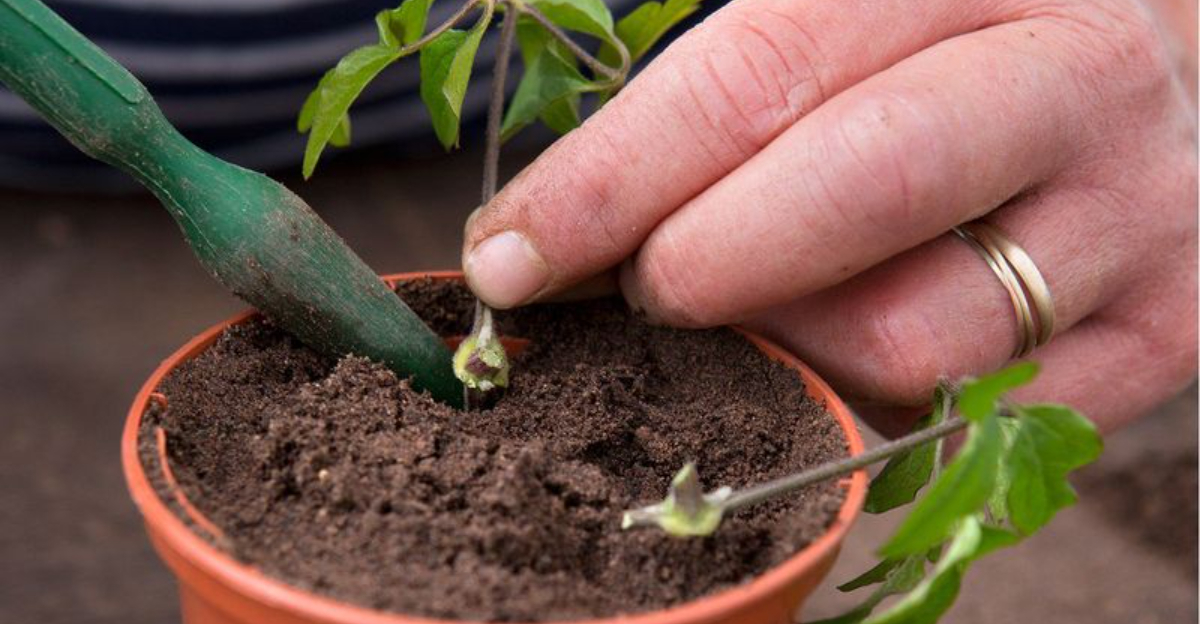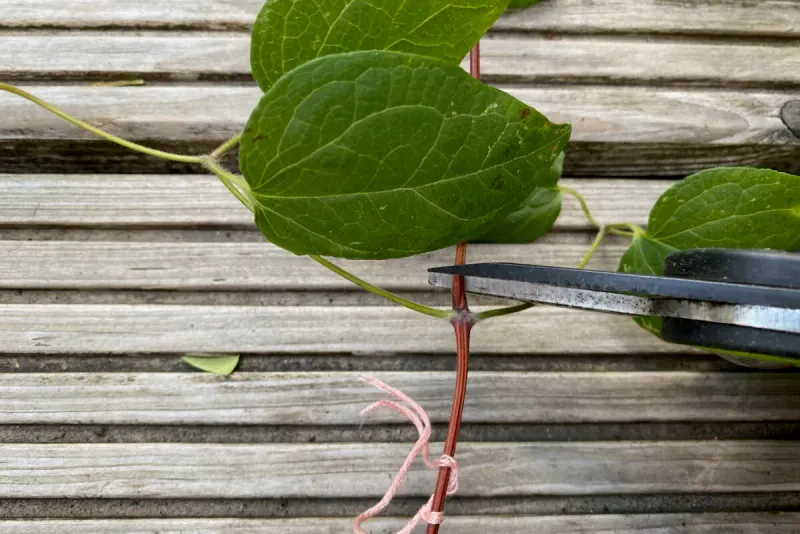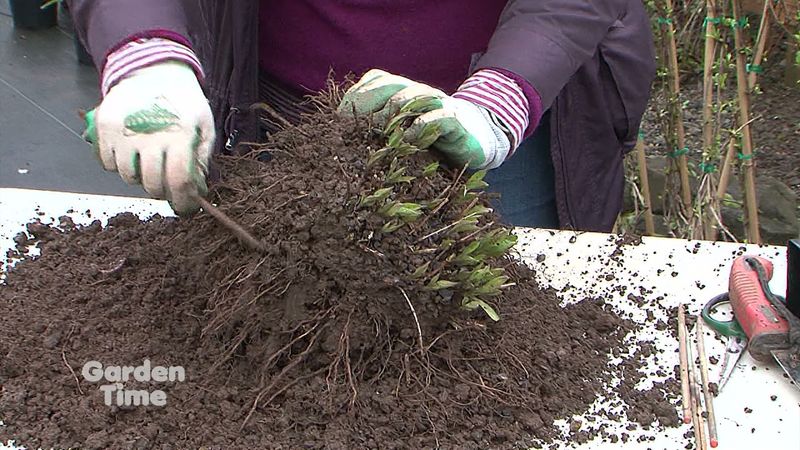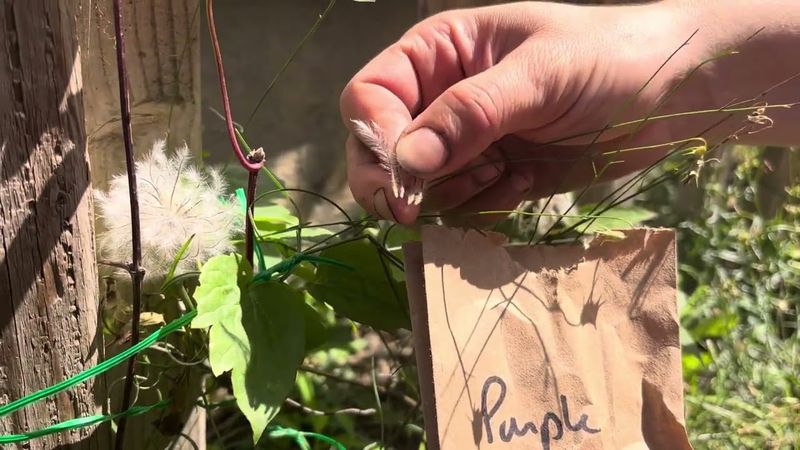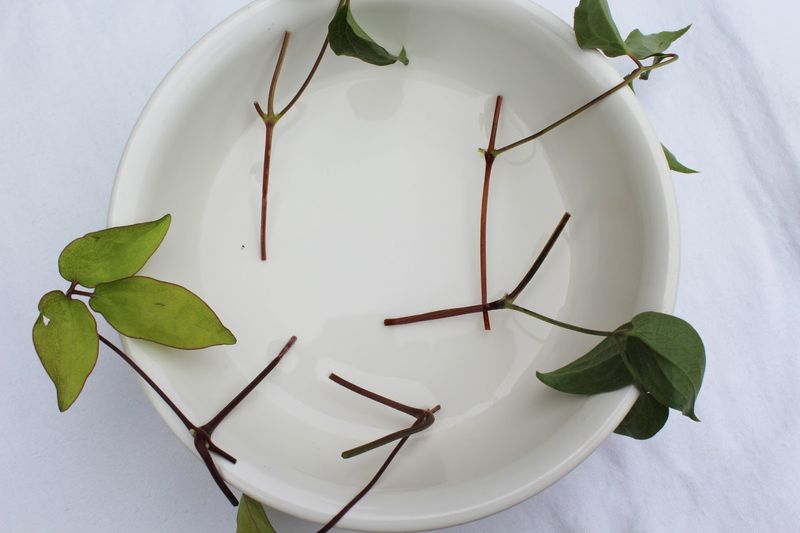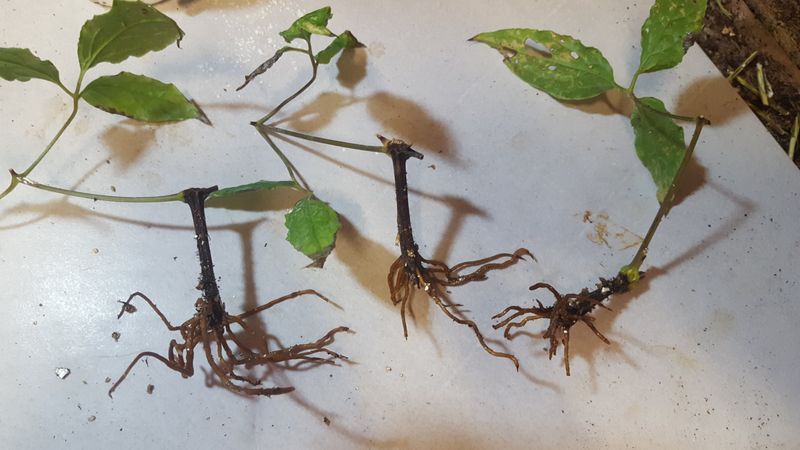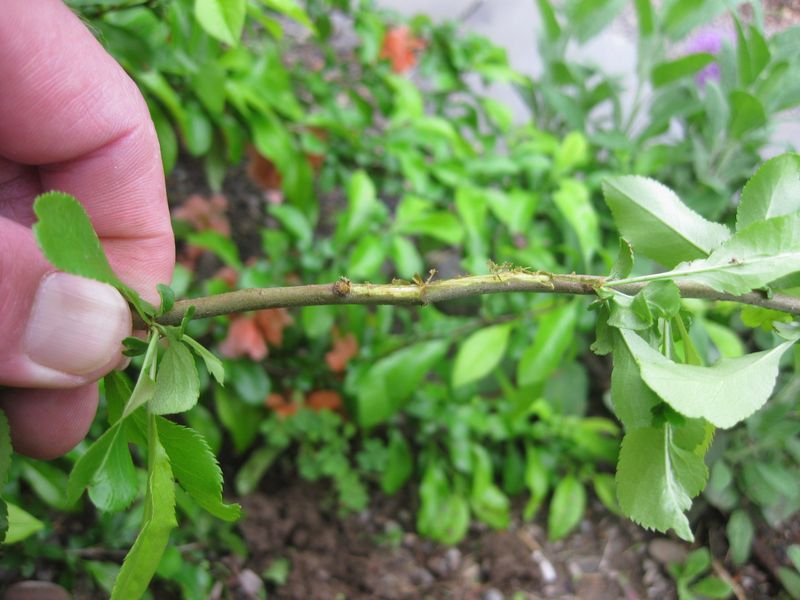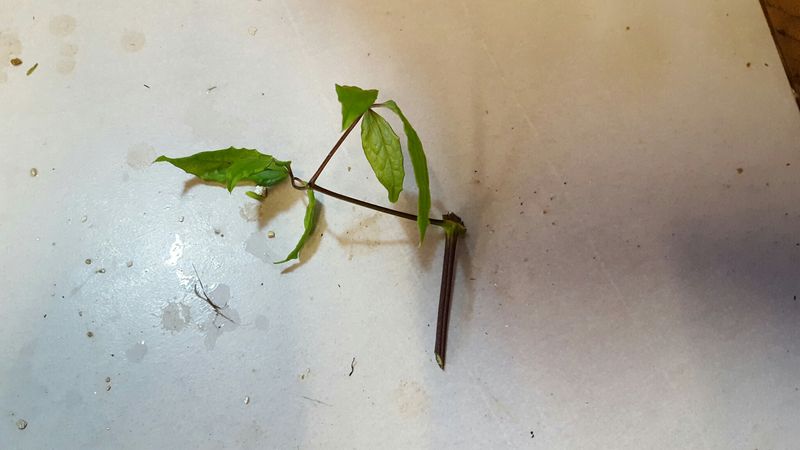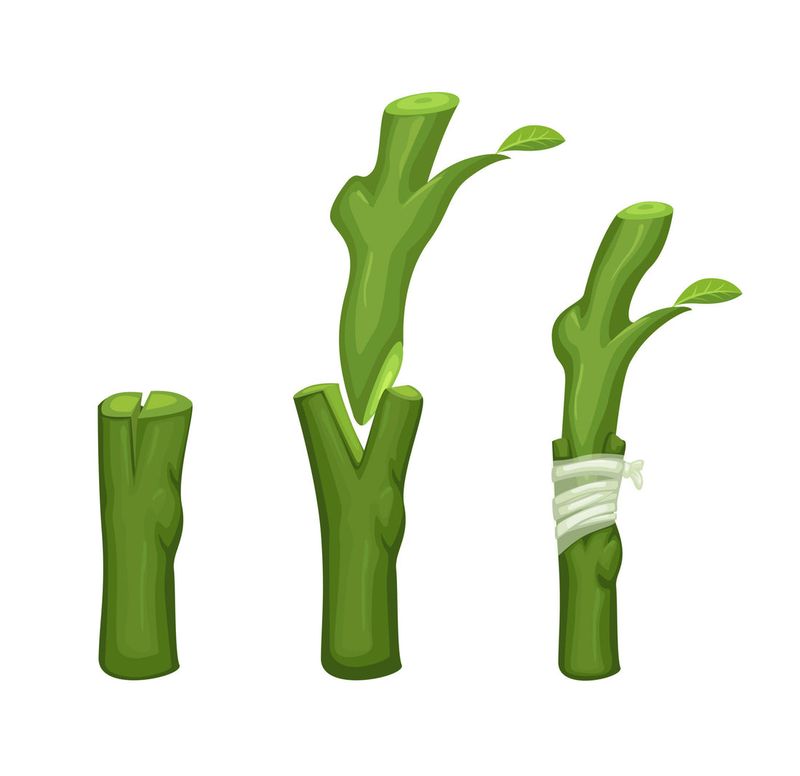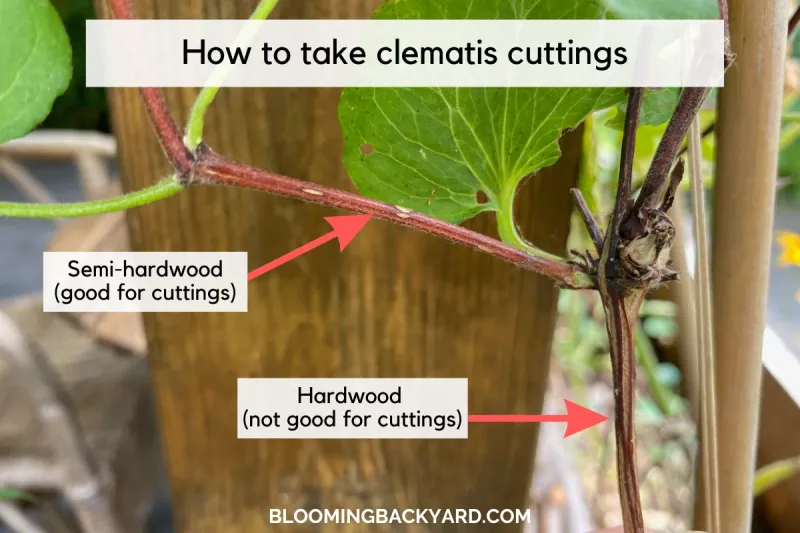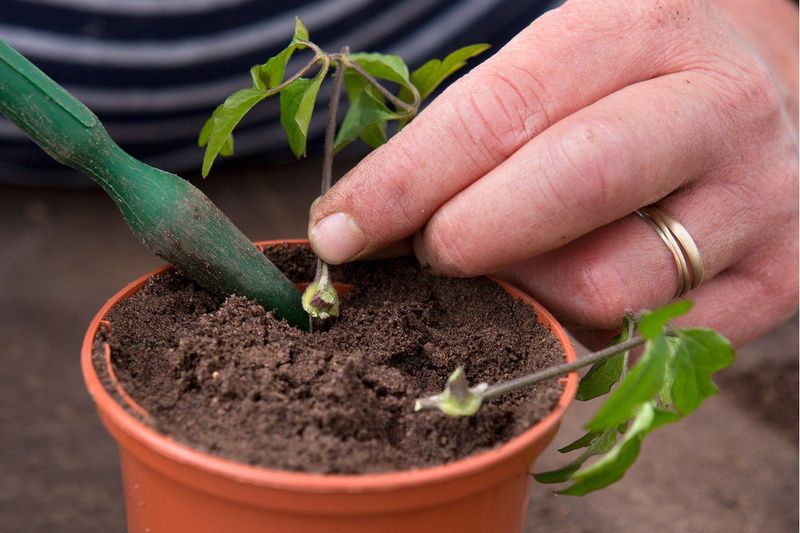Creating a stunning garden filled with vibrant clematis is more achievable than you might think. With twelve straightforward methods, you can propagate these beautiful flowering climbers and transform your outdoor space into a colorful paradise.
Whether you’re a seasoned gardener or a beginner, these techniques offer a range of options to suit every skill level and garden setup. Embrace the joy of nurturing clematis and watch as your garden flourishes with these easy propagation methods.
1. Stem Cuttings
Propagating clematis through stem cuttings is an invigorating way to multiply your plants. Begin by selecting healthy, non-flowering stems, and cut them below a leaf node.
Remove the lower leaves, leaving a couple at the top, and dip the cut end in rooting hormone to encourage growth. Place the cutting in a pot with well-draining soil, ensuring the node is buried.
Keep it moist and in indirect sunlight until roots develop. After a few weeks, the cutting will develop roots and can be transplanted. This method is perfect for gardeners looking to expand their collection quickly and effectively.
2. Division
Dividing mature clematis plants is an effective way to rejuvenate them while creating new growth.
Carefully dig up the plant and gently separate the roots into smaller sections with at least one healthy shoot each. Use a sharp spade for clean cuts to prevent damage.
Replant the divisions in fertile soil, keeping them well-watered. This method not only propagates new plants but also encourages the original clematis to thrive.
Gardeners will enjoy the dual benefit of a refreshed parent plant and new additions to their garden.
3. Seed Sowing
Seed sowing offers a satisfying way to grow clematis from scratch. Collect seeds from a mature plant or purchase them from a trusted source. Plant them in small pots filled with seed-starting mix, pressing lightly to ensure contact with the soil.
Maintain consistent moisture and place in a warm, sunny spot. Patience is key, as germination can take several weeks.
Once seedlings appear, they can be transplanted into the garden. This old-fashioned method is perfect for those who enjoy watching the entire life cycle of a plant from seed to bloom.
4. Clematis in Water
Using water to propagate clematis cuttings is a visually pleasing and simple method. Take a healthy cutting and place it in a clear jar of water, making sure the leaves are above the waterline. Change the water regularly to prevent stagnation.
Roots will begin to form in a few weeks, at which point the cutting can be transplanted into soil.
This method is not only effective but also allows you to observe the fascinating process of root development. It’s a great choice for those who appreciate a bit of science in their gardening endeavors.
5. Root Cuttings
Root cuttings offer a robust way to propagate clematis. During the dormant season, dig up a mature plant and select healthy roots. Cut them into sections about 2 inches long, ensuring each has several root hairs.
Plant horizontally in a pot filled with a mix of sand and compost, covering lightly with soil. Keep them in a warm, moist environment until shoots appear.
This method taps into the plant’s natural ability to regenerate, providing a strong start for new plants. It’s particularly satisfying for gardeners who enjoy a little extra effort for rewarding results.
6. Air Layering
Air layering is a refined propagation technique that involves encouraging roots to form on a plant stem while it’s still attached. Choose a healthy stem and make a small incision. Wrap the area with moist sphagnum moss, then cover with plastic wrap to retain moisture.
In a few months, roots will develop at the incision site. Once established, the stem can be cut and planted. This method is ideal for those who enjoy a hands-on approach and the anticipation of watching new roots form before their eyes.
7. Clematis from Softwood Cuttings
Softwood cuttings are a quick and efficient way to propagate clematis. In spring or early summer, select new growth that is just starting to firm. Cut several inches below a leaf joint and remove the lower leaves.
Dip the cut end in rooting hormone and place in a pot with a sandy, well-draining mix. Keep the cuttings misted and in indirect sunlight.
Roots should develop in a few weeks, making this a fast method for those who want to see results quickly. It’s perfect for gardeners who enjoy seeing swift progress in their propagation efforts.
8. Grafting
Grafting offers a sophisticated way to propagate clematis, combining the best traits of two plants. Use a sharp knife to make precise cuts on both the rootstock and scion. Bind them together carefully with grafting tape to ensure stability.
Place the graft in a controlled environment to encourage successful fusion. This method requires patience and skill but rewards with unique plants that boast enhanced vigor or traits. It’s perfect for gardeners seeking to experiment with creating custom clematis varieties that stand out in their garden.
9. Clematis from Hardwood Cuttings
Hardwood cuttings are a reliable method for propagating clematis during the dormancy of winter. Cut sturdy, mature stems and plant them in a pot with a sandy, well-drained mix.
Place the pot in a cold frame or a sheltered spot outdoors to allow roots to form over the winter months. This method is suited for those who are patient, as it takes time for the cuttings to establish.
However, the result is a hardy new plant ready to thrive in the spring, making it well worth the wait for dedicated gardeners.
10. Clematis from Leaf-Bud Cuttings
Leaf-bud cuttings are a nuanced approach to clematis propagation. Choose a shoot with a healthy leaf and bud. Cut about an inch below the leaf and remove the bud.
Plant the cutting in a pot with a sterile, well-draining mix, ensuring the leaf rests above the soil. Keep it in a humid environment to encourage rooting.
This technique is for those who enjoy a challenge and the satisfaction of successful, detailed work. It’s a rewarding way to add new life to your clematis collection.
